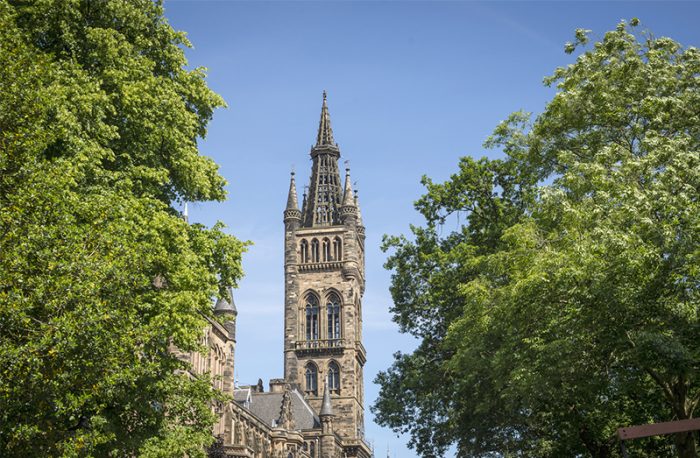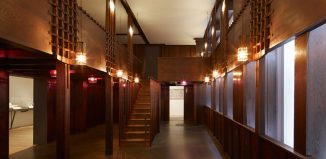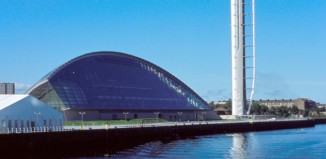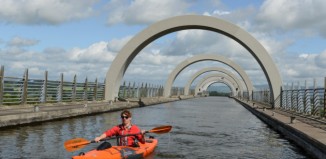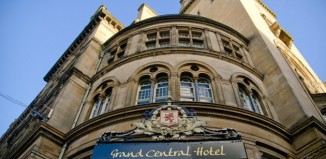Glasgow city guide: Art, architecture and cultural attractions
Our city guide to Glasgow: Scotland’s second city is rich with history and famed for its Victorian and art nouveau architecture
By Wilma Patterson
There’s an old saying that ‘the Clyde made Glasgow and Glasgow made the Clyde’ and the city’s development has been intrinsically linked with the waters that flow through it. Back in the 17th century the river was so shallow you could wade across it, but it was gradually deepened and canalised so that large merchant vessels could sail right into the city centre with their precious cargoes of tobacco and sugar. It also meant that ships could be constructed here – an industry that continues to this day.
On the north side of the river at Finnieston, connected by the ‘Squinty Bridge’ – so-called because it’s built diagonally across the river – is where you’ll find a 12,000-seat arena built for the 2014 Commonwealth Games. Not far away is the Riverside Museum, a £74-million, pillarless zinc-clad building, which gives visitors of all ages unprecedented access to the collection of over 3,000 objects from the city’s former Museum of Transport. The architect behind the building, the late, Zaha Hadid, who was awarded the coveted 2010 RIBA Stirling Prize for her design of the Maxxi Museum in Rome. Her controversial futuristic design for Cardiff Opera House was turned down in 1995 in a furore (despite her beating more than 250 rivals in the international competition), but Glasgow was ever avant-garde.
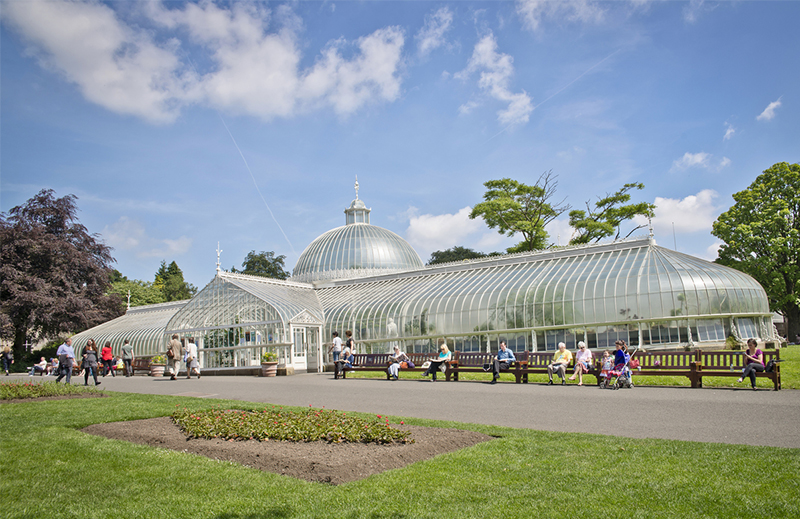
By the 1830s the city had become the self-styled ‘Second City of the Empire’ and was being compared to imperial Rome in the contemporary media. The spectacular International Exhibitions held in Kelvingrove Park in 1888 and 1901 reinforced the image of a city on the up and demonstrated Glasgow’s pride in its achievements in industry, science and the arts. In 1901 the centrepiece of the exhibition was the new Kelvingrove Art Gallery & Museum, built using the profits from the 1888 exhibition. Today, the museum is Scotland’s most visited tourist attraction and an iconic building housing an impressive art collection. Avril Paton, whose painting of a Glasgow tenement, Windows in the West, hangs in the gallery, adores the building: “It always lifts my spirits,” she says, “to see Kelvingrove in the late afternoon sunlight: a pink palace in a dream world.” In the park, you’ll find a statue of Lord Kelvin, who took his title from the river. He was a revolutionary scientist who matriculated at Glasgow University at age 10, was its Professor of Natural History for more than 50 years and died its Chancellor in 1907. Among his many achievements, Kelvin solved the problems involved in laying the first transatlantic telegraph cables and conveying messages, thus paving the way for the global communications highway. Anyone who uses a computer or mobile phone today owes Kelvin a debt.
Like Kelvin, William Hunter attended Glasgow University at a tender age. He found fame and fortune in London as an anatomist, male midwife and friend to Queen Charlotte. But the poor also benefited from his pioneering obstetric work. Hunter saved several mothers of dead babies from the gallows and his tome Uncertainty of signs of murder in bastard children is considered a classic of forensic medicine. The original neo-classical Hunterian Museum, Scotland’s first public museum, in the grounds of the old university was knocked down in 1870 when the University moved from the High Street to the more salubrious West End and sold off the 17th-century Old College – described by contemporaries as the ‘chief ornament of the city’ – for railway development. Few would describe the ‘new’ university’s 1970s Hunterian Art Gallery, which houses Hunter’s founding art collection, as an architectural ornament, but it’s an oasis of tranquillity with many treasures, including a replica of Charles Rennie Mackintosh’s 19th-century house. The original had been demolished in 1963, for reasons of ‘subsidence’. Glasgow’s Victorian heritage was not cherished then, as it is today, nor indeed was Mackintosh widely recognised as a great artist. Happily, the house which he and his artist wife Margaret Macdonald remodelled and occupied from 1906 to 1914 has been faithfully reproduced and furnished with the artists’ own furniture and fittings and so one can almost forgive the University for knocking down the real thing.
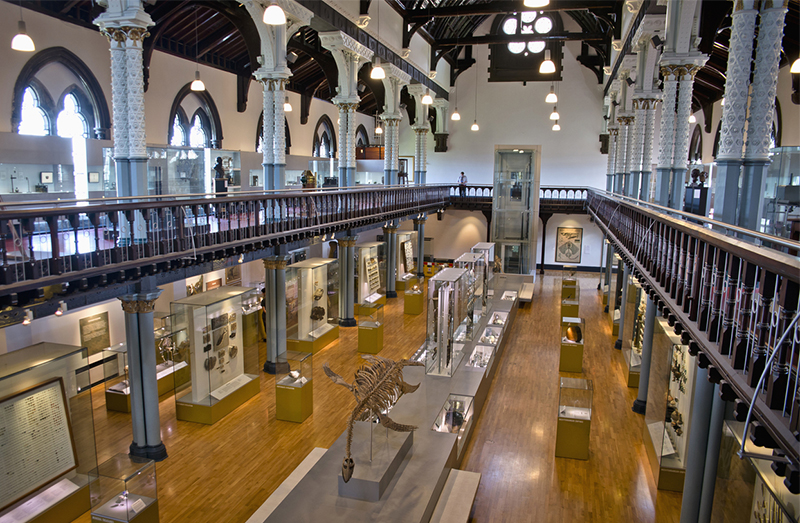
Over the centuries Glasgow has been fortunate in its bequests. The Hunterian Gallery possesses the most important Whistler collection outside the US, gifted by the artist’s sister-in-law. Whistler only visited Scotland once, but cherished his connection with Glasgow, whose Corporation was the first public body to purchase one of his paintings (the portrait of Thomas Carlyle, in Kelvingrove) – and the University, who gave him an honorary doctorate. Among the city’s many benefactors was Sir William Burrell, a wealthy shipowner and passionate art collector who gifted his priceless collection to the city in 1944. However, it wasn’t until 1967, when Mrs Anne Maxwell Macdonald presented the beautiful William Adam-designed Pollock House and estate to the City of Glasgow, that a suitable site was found to house Burrell’s artworks. The inspiring, purpose-built building (by Barry Gasson), in its lovely parkland setting, is a fitting symbol of Glasgow’s dramatic reinvention of the post-industrial city during the 1980s. Although the city has few 17th- and 18th-century buildings – the popular Gallery of Modern Art (GOMA) housed in the magnificent 18th-century mansion of one of Glasgow’s richest Tobacco Lords is an exception – Glasgow has a wonderful medieval cathedral overlooked by the atmospheric Necropolis, a much-filmed graveyard with an array of 18th- and 19th-century tombstones.
Throughout the city is the architectural legacy resulting from the boom times of the Victorian period: handsome terraces in the West End and the South Side, including good examples by eminent architect Alexander ‘Greek’ Thomson – and ostentatious villas. Park Circus, which was built in 1872 overlooking Kelvingrove Park, is one of many fine townscapes. No 22, belonged to a wealthy industrialist, Walter MacFarlane, who commissioned one of the most magnificent interiors to be found in the city.
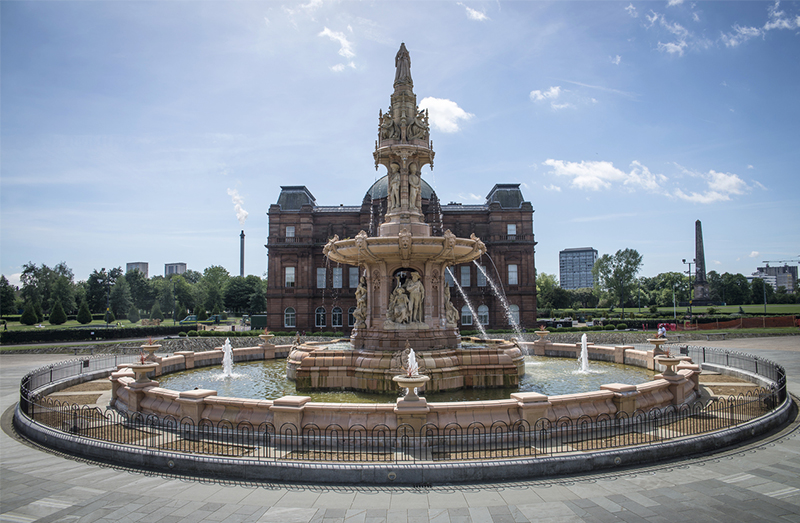
Artist Harry Magee recalls Glasgow’s heady year as European Capital of Culture 1990, in the art deco Oyster Bar of Rogano’s, Glasgow’s oldest restaurant. “Artists in the past always felt the need to migrate to London or New York, but now there’s so much stimulus in the local creative environment that New York and London come here.” Still a cultural hub, the literati tend to converge in the West End, where you can bump into Booker prize winners in Byres Road cafés and pubs. Writers like Alasdair Gray, Bernard Maclaverty or crimewriter Denise Mina, who vividly evokes the city’s darker side, are part of a large creative community. Alasdair Gray’s distinctive murals adorn the ceiling and walls of Oran Mor, a converted church bar-restaurant overlooking the Botanic Gardens.
There are also many contemporary art galleries that showcase Glasgow’s homegrown talent and that of Scotland more widely. The ScotlandArt.com Gallery on Bath Street, for example, holds over 1,000 original paintings, pictures and wall art to peruse in person. Meanwhile the gallery at MacGregor Fine Art on Hope Street is a must-visit, hosting a curated list of artists who produce Scotland-themed original artworks as well as collectable prints. Finally Castle Fine Art, situated opposite the Gallery of Modern Art, exhibits a beautiful collection of limited edition and original art by both international and Scottish artists – an art collector’s dream.
Of course, for tour guide Lesley McIlhagger, it’s not just Glasgow’s multifarious attractions, architecture and art, but the people, that make her job so rewarding: “There’s such an air of excitement and anticipation here, and I just love ‘the Glasgow Style’.”
Glasgow city guide: Top travel tip
Glasgow is a bucket-list destination for art collectors around the world, but once you’re here, how can you transport any beloved purchases safely back home?
Enter Pack & Send, experts in international shipping. They handle everything – from collection, paperwork, premium packing and safe transit – so you can follow your heart’s desire without doubting your decision. There is a dedicated Service Centre in Glasgow city, but Pack & Send can also collect your artworks or antiques from the relevant galleries or stores in person.
Pack & Send come out on top when it comes to customer service too – you will be kept updated throughout the whole process. They’ve dealt with everything – all sizes and values – before, so your item, whatever it is, will be safe with them. Call 0345 873 9990 or visit www.packsend.co.uk for more details.

